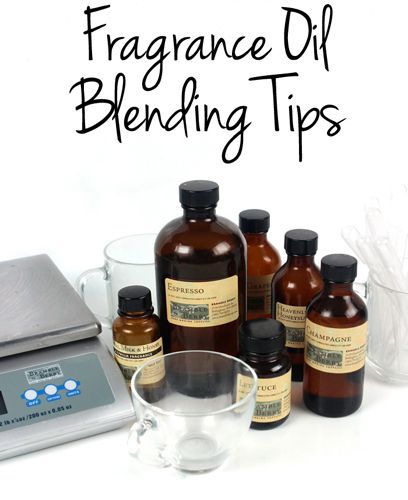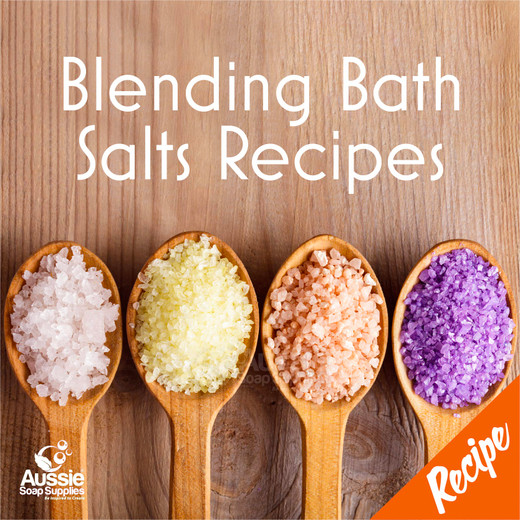
Courtesy Soap Queen Blog
Fragrance oils are comprised of various synthetic and natural scent components. They include top, middle and bottom notes. Fragrance oils are beautiful on their own, but can increase in complexity when mixed with other scents. Blending fragrance oils is also a fun way to create your own signature fragrances.
Blending fragrance oils is fun, but can be tricky. Consider adding spices when cooking; some spice blends sing while others flounder. Mixing fragrance oils is similar to mixing spices and ingredients. Some fragrances simply do not smell pleasant when mixed. Notes can become muddled or disappear completely. Remember, there is not a right or wrong way to blend fragrances.Fragrance is a personal preference. What you love, other people may not and vice versa.
Consider What “Type” of Scent it is: There are several large categories of fragrance oils. These include (but are not limited to), floral, fruity, clean, masculine and sweet. A great place to start when mixing fragrances is to define the fragrance oil you are wanting to blend. A great tip to make blending easier is to organize your fragrance oil collection by scent type. This way when you are mixing, you can easily identify what general scent profile the fragrance oil contains.
Consider All the Notes in the Fragrance: The larger categories of fragrance oils (floral, fruity, clean, masculine, sweet) have numerous sub-categories. For example, citrus scents would be considered fruity. But citrus comes in many forms, from the zesty Ginger Lime Fragrance Oil to the creamy and sweet Creamsicle Cybilla Fragrance Oil. While both are fruit scents that feature citrus, one is a “clean, fresh, zesty citrus,” while the other could be considered a “sweet, creamy, foodie citrus.” It’s important to consider all the notes of a fragrance, rather than just the general category. Some fragrances may even fall into two categories, such as the Apricot Freesia Fragrance Oil. This fragrance could be considered a fruity/floral mixture.
Consider How Strong the Fragrance is: Some fragrance oils feature stronger notes than others. When blending fragrances, these strong notes may overpower fragrance oils with more subtle notes. When working with extremely strong fragrance oils, use less in the blend in order to keep the integrity of the weak scents. There is no point in mixing fragrances when one completely covers up the other!
Now that you have carefully thought about what kind of fragrance you are working with, and how strong it is, it’s time to get mixing. Some soapers may be a little nervous to blend their scents because if a blend does not turn out, the fragrance oil could be wasted. To avoid this, use very small amounts of each fragrance oil when starting the mixing process.
Using droppers, decide what amount you’d like to consider “one part.” Because some fragrance oils are heavier than others, measuring in weight keeps it consistent. When mixing fragrances to find blends for the some samples (you can find the blends here) 0.1 oz of fragrance oil is considered “one part.” Two to three fragrance oils are added to a fragrance oil safe container, at 0.1 oz each. The mixture is then swished around in the container to ensure the oils are fully blended. Then it’s time to smell! If you’re super unsure of your blend idea, you can even do ‘parts’ as small as 1 drop.
When smelling your blend, consider these questions:
- Do the notes of the fragrances complement each other? If so, you’re on the right track. You may even be done blending! If you are in-love with your blend, it’s time to test in a real product.
- What notes are strong, and which are weak? It’s interesting how when fragrance oils are blended, the notes can completely change. Consider what notes you smell right away, and which play a background role.
- Does one fragrance oil completely overpower another? If you cannot smell one fragrance oil at all, add more one part at a time. You want the blend to be just that…a blend! One fragrance should not completely dominate the other.
- Can you smell multiple parts of all the fragrance oils? If you can smell multiple components of all the fragrance oils, this is a good thing.
Once you have smelled the blend with equal parts of each fragrance, add more fragrance (one “part” at a time) as you see fit. Keep smelling after each addition to find just the right amounts. Once you are happy with your blend, transfer the blend to a small container and label. This way you can easily re-smell the fragrance and recreate it in larger projects. Or, use the small amount of oil to make a test batch to see how the blend does in your product of choice.
Some fragrance oils tend to smell good with wide variety of scents and are my good go-to blenders. These include:
Vanilla Select Fragrance Oil: Blends well with sweet, masculine and fruity scents.
Champagne Fragrance Oil: Blends well with fruity, clean, sweet and some floral scents.
Baby Rose Fragrance Oil: Blends well with floral, fruity and some sweet scents.
Green Tea Fragrance Oil: Blends well with clean, fruity, floral and masculine scents.
10x Orange Essential Oil: Blends well with fruity, clean, sweet, masculine and floral scents. **We cannot import 10 Fold due to flashpoint, use Valencia Orange in higher concentration
Sensuous Sandalwood Fragrance Oil: Blends well with masculine, sweet and some floral scents.
Looking for more SQ blog posts about fragrance oils? Check out these posts below:
What is Fragrance Oil Made Of?
Frozen Fragrance Oils
What are Water White Fragrance Oils?
Why Did My Soap Turn Brown?
Undiluted Aroma Oils + Plastic Don’t Mix
| Difficulty: | Beginner |








